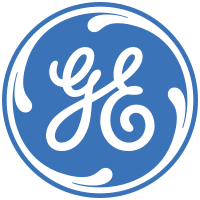Charles A. Coffin
Charles Albert Coffin (31 December 1844 – 14 July 1926) was an American businessman who was the co-founder and first President of General Electric corporation.
Early life
He was born in Fairfield, Maine, the son of Albert Coffin and his wife Anstrus (Varney). He married Caroline Russell of Holbrook, Massachusetts and had three children.
Career
At age 18, he moved to Lynn, Massachusetts to join his uncle Charles E. Coffin and his shoe company, at which he spent the next twenty years. Eventually he established his own shoe factory named Coffin and Clough in Lynn.[1]
In 1883, he was approached by another Lynn businessman, Silas A. Barton, to bring to town a struggling electric company from New Britain, Connecticut, finance it and lead it.[2] With the engineering work of Elihu Thomson and Edwin J. Houston[3][4], Coffin was able to build up the company, renamed Thomson-Houston Electric Company, to be an equal to Thomas Edison's companies.
Under Coffin, Thomson-Houston deployed power plants in the South, including two in Atlanta, Georgia to run the electric lighting and in 1889, Joel Hurt's electric streetcar line.[5]
When General Electric was formed from Thomson-Houston and Edison's companies, Coffin was its first chief executive officer. The company was tested quickly during the Panic of 1893, where Coffin negotiated with New York banks to advance money in exchange for GE-owned utility stocks.[1]
He established a duopoly of important electric patents with Westinghouse Electric in the late 1890s, and in 1901 established a research laboratory for the company.[6] Suggested by Charles Proteus Steinmetz, this was the first industrial research lab in the US.[7] He supported GE engineers in the adaptation and development of the Curtis steam turbine, which advanced electric power generation. He retired from the board in 1922, and retained a large amount of GE stock. Upon his death in 1926, he was one of the wealthiest men in the world.
| Business positions | ||
|---|---|---|
| Preceded by (none) |
President of General Electric 1892 – 1912 |
Succeeded by Edwin Rice |
| Preceded by (none) |
Chairman of General Electric 1913 – 1922 |
Succeeded by Owen Young |
References
- Charles A. Coffin Archived March 17, 2007, at the Wayback Machine
- "Coffin". Time Magazine. 1926-07-26. Retrieved 2008-08-09.
- Gifford, Jonathan (2013-09-15). 100 Great Business Leaders: Of the world’s most admired companies. Marshall Cavendish International Asia Pte Ltd. p. 34-35. ISBN 9789814484688.
- "ELIHU THOMSON". The Immigrant Learning Center. Retrieved 2019-10-19.
Between 1870 and 1880 Thomson started experimenting with electricity with fellow teacher Edwin J. Houston.
- Garrett, Franklin, Atlanta and Its Environs, 1954, Vol.II, p.189
- Charles A. Coffin | 20th Century American Leaders Database | Leadership at www.hbs.edu
- About Us - History Archived 2009-02-23 at the Wayback Machine
- Charles A. Coffin Biography at www.ge.com
Further reading
- Ingham, John N. Biographical Dictionary of American Business Leaders. Page 173 Charles A. Coffin. Published 1983 Greenwood Publishing Group.
- Hammond, John W. Men and Volts: The Story of General Electric. Published 1941.
- Passer, Harold C. The Electrical Manufacturers, 1875-1900. Published 1953
- Collins, Jim. The 10 Greatest CEOs of All Time.
